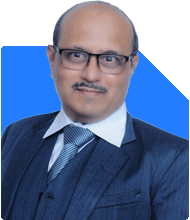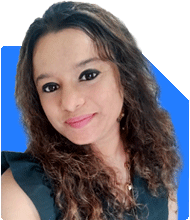How can a 43-year-old earning 80k/month with 20k/month expenses save 2 crores in 15 years?
Ramalingam Kalirajan |10893 Answers |Ask -Follow
Mutual Funds, Financial Planning Expert - Answered on Apr 07, 2025
He has an MBA in finance from the University of Madras and is a certified financial planner.
He is the director and chief financial planner at Holistic Investment, a Chennai-based firm that offers financial planning and wealth management advice.... more

Dear Sir I am 43 years old, my monthly income is 80 thousand rupees, my monthly expenditure is 20 thousand rupees and I do not have any savings. I can save for 15 years. Which way of saving should I choose so that my savings reach 2 crores?
As a Certified Financial Planner, I will guide you clearly.
Let us build a step-by-step, simple plan with professional analysis.
Let us understand your goals and create a 360-degree strategy.
Understand Your Core Financial Strength
You have no loans. That gives you a peaceful start.
You spend only Rs. 20,000 out of Rs. 80,000. That is just 25%. Very rare.
You have no savings yet. But your savings potential is very high.
You have 15 years. That gives you enough time for good wealth creation.
You are in full control of your monthly cash flow. That’s a powerful advantage.
Know the Power of Compounding with Time
Time helps your savings grow without working harder.
When you save monthly, your wealth grows faster.
Even a small return gap can create a big difference in 15 years.
Saving early and regularly gives higher benefit than investing large later.
Monthly investing creates financial discipline. It avoids emotional mistakes.
Choose the Right Saving Path – Avoid Safe but Weak Options
Saving in bank accounts gives low returns. It beats only inflation, not wealth.
Recurring deposits and fixed deposits give fixed returns. But post-tax returns are poor.
Real wealth cannot be built by FDs. Avoid using them for long-term goals.
Post office saving schemes are also slow in growth. They are good only for senior citizens.
Select Growth-Focused Investment Channels
For your 15-year goal, you need growth-oriented instruments.
Equity mutual funds are better suited for this. They can beat inflation easily.
Equity mutual funds work well for goals beyond 10 years.
These funds are managed by professional fund managers. They adjust based on market.
Equity mutual funds are safe for long term. Volatility reduces over time.
Why You Should Prefer Actively Managed Mutual Funds
Actively managed funds beat average returns with smart decisions.
Fund managers shift sectors and stocks based on opportunities.
You get human intelligence and strategy. Not just mechanical movement.
Passive funds like index funds copy the market. They don’t outperform.
Index funds lack flexibility. They go down when the market goes down.
Actively managed funds reduce downside with smart allocation.
You get better tax planning and rebalancing in active mutual funds.
Choose Regular Plan via Mutual Fund Distributor with CFP
Direct funds need you to select and manage everything yourself.
Without experience, it is easy to choose wrong funds in direct plans.
Direct plans have no advisor support. You may not know when to exit.
Regular plans through a Certified Financial Planner give better guidance.
Your plan will be reviewed, updated, and aligned to your goals.
Distributors with CFP background act with long-term ethics and clarity.
They monitor fund performance, risk level, and timing of switches.
Best Saving Approach for You – SIP Method
Start a monthly SIP (Systematic Investment Plan). It builds wealth steadily.
You can start with Rs. 30,000 or more. The rest can be in backup savings.
SIP works on rupee cost averaging. You buy more units when markets fall.
It reduces emotional panic. You stay invested across market cycles.
SIP gives discipline. Even if markets fall, your long-term value increases.
For a 15-year goal, SIP is safer and smarter than lump sum.
Use a 3-Tier Saving Strategy – Growth + Backup + Liquid
Use 75% of your savings in equity mutual funds through SIPs.
Use 15% in short-term debt mutual funds. For emergencies and backup.
Keep 10% in bank for absolute liquidity.
Rebalance once in a year with guidance from your MFD-CFP.
Don’t withdraw midway unless very necessary.
Emergency Fund Is Important Before Long-Term Investments
Keep at least 6 months of expenses as emergency fund.
In your case, Rs. 1.2 lakhs (20,000 x 6) is enough as buffer.
This money can be in bank or liquid fund.
It avoids disturbing long-term investments during emergencies.
Insurance Should Be Taken Before You Invest
First, get term insurance for Rs. 1 crore or more.
Premium will be low at your current age.
Do not mix investment with insurance.
Avoid ULIPs, endowments, or money-back plans.
Health insurance is also important. Take one if you don’t have through job.
Tax Planning Is Important for Wealth Growth
Use Rs. 1.5 lakhs under 80C if needed. PPF or ELSS mutual funds help.
PPF is slow but tax-free. ELSS is faster with tax benefit.
Don’t put all in tax-saving. Balance between growth and tax-saving.
Use SIP in tax-saving mutual fund, if needed for section 80C.
Taxes on Mutual Fund Gains – Updated Rules (2024-25 Onwards)
Equity mutual fund gains above Rs. 1.25 lakh (after 1 year) are taxed at 12.5%.
Short-term gains (within 1 year) are taxed at 20% flat.
Debt mutual fund gains are taxed as per your income slab.
SIP gains are taxed proportionately based on each unit’s holding period.
A Certified Financial Planner will help you reduce tax impact smartly.
Periodic Review Is Key to Stay on Track
Every year, review your funds, goals, and allocation.
Shift money from overperformers to underperformers, if needed.
Exit poor funds and reinvest in strong performers.
Recheck risk levels and make changes based on age and market.
Avoid checking daily market movement. Focus on long term.
Avoid These Common Mistakes in Long-Term Saving
Don’t stop SIPs when markets fall. That is when they work best.
Don’t switch between funds often. Stay long for best results.
Don’t expect fixed returns. Mutual funds grow in cycles.
Don’t invest based on tips or social media.
Avoid over-diversification. Stick to selected well-managed funds.
Your Ideal Monthly Saving Structure – Sample Strategy
Rs. 45,000 in equity mutual fund SIPs.
Rs. 10,000 in short-term debt mutual fund SIPs.
Rs. 5,000 in tax-saving mutual fund if needed.
Rs. 5,000 in emergency bank fund.
Rs. 5,000 for yearly term insurance premium.
What You Will Achieve in 15 Years with This Structure
You can aim Rs. 2 crores if you stay invested for 15 years.
Your wealth may even exceed that with consistent SIP and good funds.
Long-term equity SIPs create strong compounding effect.
Your goal is achievable. You just need focus and regular saving.
Your cash surplus gives you a strong head start.
What to Do If You Receive Bonus or Extra Money
Invest 50% of that in your existing SIP funds as lump sum.
Keep 20% in bank for emergency expansion.
Use 30% for term insurance top-up or family protection.
Avoid spending full bonus. Let it support your future goal.
Finally
You have high saving power. That itself is half success.
Use mutual funds actively managed by experts. Avoid fixed income products.
Stay invested with discipline. Wealth creation is a slow and steady journey.
Work with a Certified Financial Planner. Get a personalised, well-monitored plan.
Rs. 2 crores in 15 years is realistic for you. Stay focused, patient, and regular.
Compounding rewards consistent savers. Keep emotions aside and stay committed.
Your financial future can be secure and peaceful with smart steps today.
Best Regards,
K. Ramalingam, MBA, CFP,
Chief Financial Planner,
www.holisticinvestment.in
https://www.youtube.com/@HolisticInvestment
You may like to see similar questions and answers below
Ramalingam Kalirajan |10893 Answers |Ask -Follow
Mutual Funds, Financial Planning Expert - Answered on Jun 13, 2024
Ramalingam Kalirajan |10893 Answers |Ask -Follow
Mutual Funds, Financial Planning Expert - Answered on Jun 25, 2024
Nitin Narkhede | Answer |Ask -Follow
MF, PF Expert - Answered on Oct 16, 2024
Jinal Mehta | Answer |Ask -Follow
Financial Planner - Answered on Jun 27, 2025
Ramalingam Kalirajan |10893 Answers |Ask -Follow
Mutual Funds, Financial Planning Expert - Answered on Jul 03, 2025
Ramalingam Kalirajan |10893 Answers |Ask -Follow
Mutual Funds, Financial Planning Expert - Answered on Dec 15, 2025
Ramalingam Kalirajan |10893 Answers |Ask -Follow
Mutual Funds, Financial Planning Expert - Answered on Dec 15, 2025
Radheshyam Zanwar |6746 Answers |Ask -Follow
MHT-CET, IIT-JEE, NEET-UG Expert - Answered on Dec 15, 2025
Ramalingam Kalirajan |10893 Answers |Ask -Follow
Mutual Funds, Financial Planning Expert - Answered on Dec 15, 2025
Ramalingam Kalirajan |10893 Answers |Ask -Follow
Mutual Funds, Financial Planning Expert - Answered on Dec 15, 2025
Ramalingam Kalirajan |10893 Answers |Ask -Follow
Mutual Funds, Financial Planning Expert - Answered on Dec 15, 2025
Samraat Jadhav |2508 Answers |Ask -Follow
Stock Market Expert - Answered on Dec 15, 2025
Ramalingam Kalirajan |10893 Answers |Ask -Follow
Mutual Funds, Financial Planning Expert - Answered on Dec 15, 2025
Reetika Sharma |425 Answers |Ask -Follow
Financial Planner, MF and Insurance Expert - Answered on Dec 15, 2025
Radheshyam Zanwar |6746 Answers |Ask -Follow
MHT-CET, IIT-JEE, NEET-UG Expert - Answered on Dec 15, 2025














.jpg)











